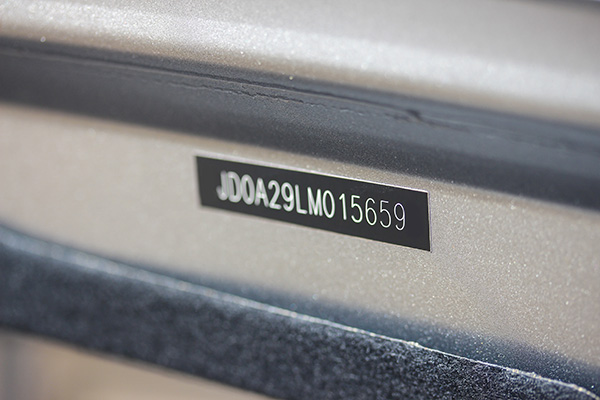
Have you ever wondered what all those numbers and letters in your car's Vehicle Identification Number (VIN) mean? This unique code holds a wealth of information about your vehicle, from its manufacturer and model year to specific features and production details. Decoding your VIN can give you insights into your car's history and specifications, which can be especially useful for maintenance, repairs, or when purchasing a used car.
What is a VIN, and Why is it Important?
A VIN is a 17-character string of numbers and letters that serves as your vehicle's fingerprint. Every car, truck, and motorcycle has a unique VIN, making it an important tool for identifying and tracking vehicles. It's crucial for various purposes, including registration, insurance, recalls, and service records. Understanding your VIN can help you verify the authenticity of a vehicle, check for recalls, and access detailed information about its features and history.
Breaking Down the VIN Structure
The VIN is divided into sections, each providing specific information about the vehicle. Here's a detailed look at what each part of the VIN represents:
1. World Manufacturer Identifier (WMI)
The first three characters of the VIN make up the World Manufacturer Identifier. This section identifies the vehicle's manufacturer and the country where it was built. The first character represents the country, the second denotes the manufacturer, and the third indicates the vehicle type or manufacturing division.
2. Vehicle Descriptor Section (VDS)
The next six characters (positions 4-9) form the Vehicle Descriptor Section. This part of the VIN provides information about the vehicle model, body style, engine type, and other attributes. Manufacturers use this section to detail the car's design and features. For instance, it might specify whether the car is a sedan, SUV, or truck and the type of engine it houses.
3. Vehicle Identifier Section (VIS)
The final eight characters (positions 10-17) make up the Vehicle Identifier Section. This section includes the vehicle's model year, the plant where it was manufactured, and a unique serial number. The tenth character represents the model year, while the eleventh character indicates the assembly plant. The last six characters are a unique production serial number, distinguishing your car from others of the same make and model.
How to Decode Your VIN
Decoding your VIN might seem complex, but various online tools and resources can simplify the process. Here's a step-by-step guide to decoding your VIN:
Locate Your VIN
You can find your VIN on the driver's side dashboard, visible through the windshield, or on the driver's side door jamb. It's also listed on your vehicle's registration documents and insurance card.
Enter the VIN into a Decoder Tool
Numerous websites offer free VIN decoding services. Simply enter your VIN into the tool, and it will provide detailed information about your vehicle.
Interpret the Results
The decoder tool will break down each section of the VIN and present the data in an understandable format. You'll get insights into your vehicle's origin, model, engine type, and other specifications.
Common Uses for VIN Information
Understanding your VIN is beneficial for several reasons. Here are some common uses:
Vehicle History Reports
When buying a used car, a VIN check can reveal its history, including previous ownership, accident reports, and any title issues. Services like Carfax and AutoCheck use VINs to compile comprehensive vehicle history reports.
Recall Information
Manufacturers issue recalls for vehicles with safety or performance issues. By checking your VIN, you can find out if your car is subject to any recalls and ensure that necessary repairs are made.
Parts and Service Compatibility
Knowing your VIN helps ensure you get the correct components for your specific vehicle model when ordering replacement parts or scheduling maintenance.
Avoiding VIN Fraud
VIN fraud is a serious issue where criminals tamper with a vehicle's VIN to conceal its true identity, often to hide stolen vehicles or to mask serious damage. Being vigilant and knowledgeable about VINs can help you avoid falling victim to such scams. Always compare the VIN on the car with the one on the title and registration documents. If anything seems suspicious, walk away or consult a professional for further inspection.
Ensure your car is in top shape with a comprehensive check-up at Community Auto. Our experts are here to assist with all your automotive needs!